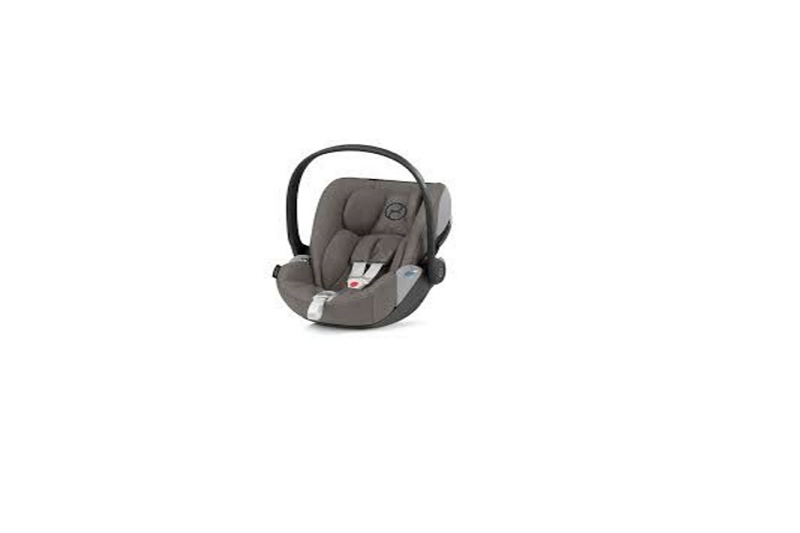When can a child be out of a booster seat? This is a common question many parents ask. However, reading through this article will help you with answers.
When a child is at least four feet nine inches tall, he or she should be in the car’s regular seat belt. If possible, children younger than twelve years old should still sit in a booster seat until they are big enough to fit properly with only a lap and shoulder belt.

Some states have laws requiring older kids who weigh more than 80 pounds to use this type of restraint system while riding in the backseat without an adult present.
The best way to know if your child can safely ride without wearing something that restricts movement is by measuring him or her against all available safety seats and their weight restrictions:
– Measure from under his/her armpits down over the top of hips down to the floor between knees (height) – Measure from the top of his/her ears over to the bottom of chin (shoulder height) – Measure around widest part below the waist and above hips, keeping tape parallel with floor if the child is sitting down (waist size)
– If any measurement exceeds that safety seat’s height or weight limit for your child’s age group, he or she should continue using a booster. You can use this checklist as a reference:
My Child Is Ready To Ride Without A Booster Seat When He Or She Meets ALL Of These Requirements:
* Has reached four feet nine inches tall
* Weighs more than 80 pounds
* The shoulder belt never rests on his neck but fits securely across the middle of chest and shoulder between pits
* Properly fit lap belt fits low and tight on hips, not across the midsection.
– The shoulder belt should NEVER rest on his/her neck or cross the face or throat – Make sure the lap belt is fitting LOW AND TIGHT around the child’s HIPS (not stomach). These are just some things to remember when transitioning out of a booster seat.
How do you put a seatbelt on a booster seat?
The seatbelt should go over the top of the booster seat. It shouldn’t be under it, as this could cause injury to your child in an accident.
The belt can tuck between the carseat and yourself if you’re using a lap-and-shoulder belt or just around one side of the buckle strap if you have a three-point harness.
If it is raining outside, try putting some plastic grocery bags on each shoulder first before buckling up so that water doesn’t get into your vehicle from above! Don’t forget to put both parts of the seatbelts together at once – not just one part by itself – when getting ready for travel because otherwise they will ride upon themselves and come undone during the drive.
When can you use a backless booster seat?
If your child has outgrown their forward-facing car seat but is not yet big enough to be in the vehicle without an added boost. Your child must meet all of these criteria: they are at least 40 pounds AND between four years old and eight years old OR weigh 40 or more pounds AND older than three.
They also should have shorter than 30-inch legs for this type of booster to work properly! To figure out if it’s time to move on from your convertible car seat, try switching them over to one that doesn’t require installation – like an infant carrier with detachable bases (for example). If they still need help staying upright while seated then it’s time to transition them to a backless booster seat.
Backless boosters are great for kids who have outgrown the weight limitations of their harnessed car seats, but still need that extra support while seated to be safe during travel.
They don’t require installation and can easily fit into any vehicle which makes them more flexible than other types of booster seats! Plus, they typically come with armrests or side cushions which help distribute crash forces evenly across your child’s body if an accident were to happen while driving – this ensures maximum protection all around!
If you know someone close by struggling through this process themselves it might also be helpful to share some tips on how much practice is required before children feel comfortable using these types of boosters.
For example, short trips are the best way to get your child used to these types of car seats before taking them on longer trips with you!
Should my 8-year-old be in a booster seat?
It’s an interesting debate that parents will have to face. The right answer isn’t always easy to come by, so here are some tips you should think about before making your decision:
– As long as there is a seat belt in the backseat for them and they fit properly in the booster seat without their knees touching the seats or dashboard – it’s probably fine! If not, then yes, put him or her in one of these types of car seats.
– More likely than not, if your child can reach all parts of his vehicle including controls such as pedals and steering wheel he/she most likely needs a new type of carseat altogether because this means that they’re too large for a seat belt to be in the correct position.
– You can also check if your child is ready for a booster seat by holding their arms straight out and seeing how long they are – if it’s longer than an adults’ arm, then this means that he/she isn’t quite ready yet!
